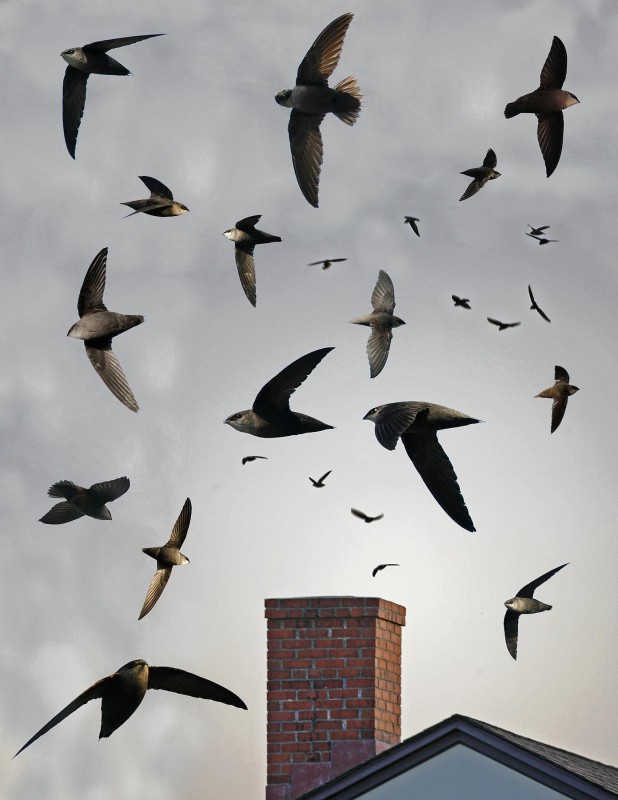-By Karen Etter Hale-
Chimney Swifts are on the decline, and we need YOUR help in identifying roost chimneys and counting the swifts that use them. It's easy and fun to conduct a "Swift Night Out". By identifying roost chimneys, we'll have a better chance of saving them.
A complete guide to host a “Swift Night Out” event is available at https://www.wiswifts.org/wp-content/uploads/2020/08/How-to-Host-a-SNO-final.pdf
Follow these additional guidelines to help increase your event’s safety during the COVID-19 pandemic: Choose a site that provides adequate room to spread out; invite a small group, such as your family or those living in your residence; wear masks if you can’t practice social distancing.
And here's how to do your own.
- Pick one or more nights from early August in northern Wisconsin through mid- to late September in southern Wisconsin.
- Look for tall brick chimneys (or ones on homes) that are uncapped. Watch to see where swifts are feeding and congregating.
- Observe the roost starting about 30 minutes before sunset until 10 minutes after the last swift enters the chimney. Count (or estimate) the number of swifts as they enter the chimney. It’s useful to count in groups of 5 or 10 birds at a time when many birds pour into the chimney in a short period of time.
- Enter the data on eBird (preferred!). To get a quick start with eBird, check out https://www.macaulaylibrary.org/get-started-with-ebird/
When prompted for location, map your roost site to an exact address or point. After you enter the number of Chimney Swifts, please use the hash tag #swiftwi in the Chimney Swift details section. This will help us greatly in accessing the data. - If you want to go above and beyond and be a ROCK STAR, please add additional information in the Chimney Swift details section, in this exact order, with semicolons separating the data: #swiftwi; the type of building (residence, school, church, business, hospital, apartment, swift tower/structure, etc.); the condition of the chimney (in good shape; in need of repair); any other notes. (Example: #swiftwi; residence; chimney in need of repair; any other notes)
- Please also include any Common Nighthawks you see. These aerial insectivores are also in decline.
- Or, if you do not use eBird, send the same information as above plus date of observation, exact start time, length of observation at the roost site, and your name, mailing address and email address to Fred Dike, 2613 Waltham Rd., Madison, WI 53711 or to freddmadison@aol.com
More information about Chimney Swifts and how to help protect them can be found on the Wisconsin Chimney Swift Working Group website at http://www.wiswifts.org/
-- This is one of several timely articles in this month's Badger Birder newsletter; don't miss out on the latest birding and conservation news. Become a WSO member today! --


